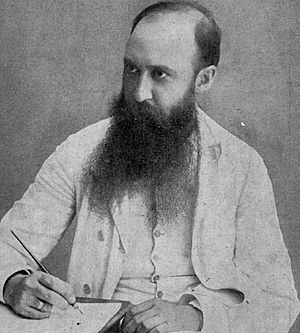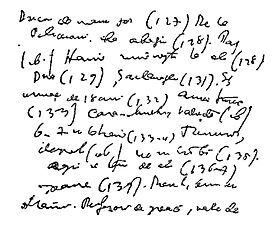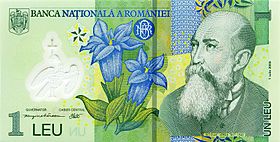Nicolae Iorga facts for kids
Quick facts for kids
Nicolae Iorga
|
|
|---|---|

Nicolae Iorga in 1914 (photograph published in Luceafărul)
|
|
| 34th Prime Minister of Romania | |
| In office 19 April 1931 – 6 June 1932 |
|
| Monarch | Carol II |
| Preceded by | Gheorghe Mironescu |
| Succeeded by | Alexandru Vaida-Voievod |
| President of the Senate of Romania | |
| In office 9 June 1939 – 13 June 1939 |
|
| Monarch | Carol II |
| Preceded by | Alexandru Lapedatu |
| Succeeded by | Constantin Argetoianu |
| President of the Assembly of Deputies | |
| In office 9 December 1919 – 26 March 1920 |
|
| Monarch | Ferdinand I |
| Preceded by | Alexandru Vaida-Voevod |
| Succeeded by | Duiliu Zamfirescu |
| Member of the Crown Council | |
| In office 30 March 1938 – 6 September 1940 |
|
| Monarch | Carol II |
| Minister of Internal Affairs | |
| Acting 18 April 1931 – 7 May 1931 |
|
| Prime Minister | Himself |
| Preceded by | Ion Mihalache |
| Succeeded by | Constantin Argetoianu (Acting) |
| Minister of Culture and Religious Affairs | |
| In office 18 April 1931 – 5 June 1932 |
|
| Prime Minister | Himself |
| Preceded by | Nicolae Costăchescu |
| Succeeded by | Dimitrie Gusti |
| President of the Democratic Nationalist Party | |
| In office 6 May 1910 – 16 December 1938 Serving with A. C. Cuza (until 26 April 1920)
|
|
| Preceded by | None (co-founder) |
| Succeeded by | None (party formally banned under the 1938 Constitution) |
| Personal details | |
| Born | 17 January 1871 Botoșani, Principality of Romania |
| Died | 27 November 1940 (aged 69) Strejnic, Prahova County, Kingdom of Romania |
| Cause of death | Gunshot wounds |
| Political party | Democratic Nationalist Party (1910–1938) National Renaissance Front (1938–1940) |
| Spouses |
Maria Tasu
(m. 1890; div. 1900)Ecaterina Bogdan
(m. 1901–1940) |
| Alma mater | Alexandru Ioan Cuza University École pratique des hautes études Leipzig University |
| Occupation | Writer, poet, professor, literary critic, politician |
| Profession | Historian, philosopher |
| Signature | |
Nicolae Iorga (born Nicu N. Iorga; 17 January 1871 – 27 November 1940) was a truly amazing Romanian person. He was a brilliant historian, a skilled politician, a literary critic, and even a poet and playwright! He was known for his incredible knowledge and for writing a huge number of books and articles.
Iorga held many important roles in Romania. He was a member of Parliament, the President of the Deputies' Assembly and the Senate. He also served as a government minister and even as the Prime Minister for a short time. He founded important schools and institutes, leaving a lasting mark on Romanian culture and education.
Contents
Early Life and Amazing Education
Nicolae Iorga was born in Botoșani, Romania, on January 17, 1871. His father was a lawyer, but he passed away when Nicolae was very young. This meant Nicolae and his younger brother, George, grew up without their father.
A Young Genius
Even as a child, Nicolae showed how smart he was. At just nine years old, his teachers allowed him to give lessons on Romanian history to his classmates! He loved learning and reading, especially about history. His history teacher, a Polish refugee, helped him develop a strong interest in research.
Iorga was a top student in school. By age 13, he was already writing for newspapers to help his family earn money. He became fluent in many languages, including French, Italian, Latin, and Greek. He believed that studying Greek was "the most refined form of human reasoning."
University and Studying Abroad
At 17, Iorga entered the University of Iași. He was so good that he finished his studies a year early! He graduated with top honors, writing a thesis on Greek literature. Everyone was amazed by his talent. His teachers called him a "wonder of a man" and helped him get a special scholarship to study abroad.
Iorga traveled to Italy and France to continue his studies. He learned even more languages, like English and German. He researched historical documents for his French thesis on a French crusader. During this time, he published his first book of poems and some literary studies.
A Life in Politics
Nicolae Iorga was not just a scholar; he was also very active in politics. He helped start the Democratic Nationalist Party (PND) in 1910. He believed in protecting Romanian culture and traditions.
Leading the Country
Iorga became the Prime Minister of Romania in April 1931, asked by King Carol II. During his time as Prime Minister, he traveled a lot, visiting many cities and towns across Romania. He even went on a state visit to France.
One of the biggest challenges Iorga faced was the Great Depression, which caused a lot of economic problems. His government tried to help farmers and reduce the country's debt. However, the economic situation was very difficult, and his government had to make tough decisions, like cutting pay for state employees. This led to some public unhappiness.
In May 1932, Nicolae Iorga resigned as Prime Minister and went back to his academic work.
Standing Up to Extremism
Iorga was a strong opponent of the Iron Guard, a growing political group in Romania. He signed a decree that made their movement illegal in March 1932. This started a serious conflict between him and the Iron Guard's leader.
Amazing Scholarly Work

Nicolae Iorga was an incredibly productive scholar. He could speak about 12 foreign languages! According to his biographer, he published an astonishing 1,359 books and brochures. He was compared to famous thinkers like Voltaire and Leopold von Ranke because of his vast knowledge.
His memory was said to be "absolutely extraordinary." One time, during a three-day trip, he copied and summarized 320 historical documents! Many people, including his teachers and other scholars, called him a "creator of unparalleled fecundity" and the greatest mind in Romania.
Iorga's work covered many areas of history, including:
- Medieval history
- Byzantine studies
- Latin and Slavic cultures
- Art history
- Philosophy of history
He held teaching positions at the University of Bucharest and the University of Paris. He also founded important organizations like the International Congress of Byzantine Studies and the Institute of South-East European Studies (ISSEE). He even helped turn his town, Vălenii de Munte, into a cultural and academic hub.
His Last Years
The year 1940 was a very difficult time for Romania. The country lost some of its land to the Soviet Union and Hungary. Nicolae Iorga was very upset by these events and strongly argued against giving up Romanian territory.
He continued to speak out against the new government, which included the Iron Guard. Because of a large earthquake in November 1940, he had to leave his homes. He moved to Sinaia and finished his last book.
Sadly, Nicolae Iorga was killed by a group from the Iron Guard on November 27, 1940. His death shocked many people around the world. Universities lowered their flags, and historians gave speeches honoring his life and work. He was buried in Bellu Cemetery in Bucharest.
What is His Legacy?

Nicolae Iorga's work continues to influence historians and scholars today. His studies on the origin of the Romanians and Romanian culture are still important. Many researchers have followed in his footsteps.
He is remembered not only for his scholarly work but also for his strong personality. His image has appeared in books, plays, and even on Romanian money. Since 1994, his face has been on the 10,000 lei banknote, which later became the 1 leu bill after a money reform in 2005.
Many cities in Romania have streets or boulevards named "Nicolae Iorga." His childhood home in Botoșani and his house in Vălenii de Munte are now memorial museums, where people can learn about his life.
His Family Today
Nicolae Iorga had many children. Some of them also became notable. His daughter Magdalina became a painter, and Liliana became a historian and sculptor. His grandson, Andrei Pippidi, is also a well-known historian who has edited and published many of Iorga's writings.
Images for kids
-
Memorial house in Botoșani
-
Iorga at the University of Paris, receiving his Honoris Causa Doctorate
-
Crown Councillor Iorga and Prime Minister Armand Călinescu in National Renaissance Front uniforms (10 May 1939)
See also
 In Spanish: Nicolae Iorga para niños
In Spanish: Nicolae Iorga para niños











